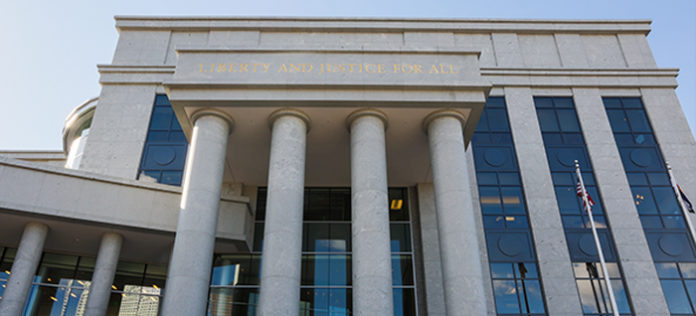
Can a police officer ask a suspect about a weapon prior to reading him his rights?
The Colorado Supreme Court is considering the question in its first batch of cases for the fall 2020 term. The issue before the court is whether the Court of Appeals made an error in finding it a harmless violation when prosecutors told a jury that a criminal defendant told police he threw away a shotgun. The oral arguments Wednesday centered around whether a public safety exemption to a suspect’s Miranda rights applied when police asked about the gun in the first place.
Marcus Perez was a passenger in a traffic stop.
Police said they saw him moving around in the car as if he were trying to conceal something, and then during the stop, Perez fled the car and led police on a chase through residential neighborhoods and through a liquor store.
As discussed in the arguments, police had him in sight except for a short time when he ran through the liquor store.
Perez resisted his arrest, and police found two live shotgun shells in his pocket during a search but no gun.
The Supreme Court will ultimately decide whether the shotgun shells indicated that Perez had a shotgun and if the presence of a shotgun fit a public safety exception to the requirements of Miranda v. Arizona. And if the public safety exception does apply, can the court devise a test that would guide police in future arrests?
The public safety exception says police may question a suspect in custody who has not yet received a Miranda warning about the presence of weapons that could immediately endanger them or the public.
Antony Noble, who argued on behalf of Perez, cited several cases where courts found the public safety exception did apply. In all of them, Noble argued, there was an immediate danger to the public or police were told of the presence of a weapon.
In one notable case, a juvenile showed a bag of bullets inside a school, which created a concern than there was also a gun and a plan to use it; in another case, a rape victim told police that a suspect was armed; and in another case, police inferred a suspect had a gun because he was dressed in military fatigues and was wearing an empty holster.
Perez’s case is distinguishable from almost every case where the public safety exception applies, Noble argued, because the only information police had was that there were shotgun shells in his pocket.
They were not responding to a crime that involved weapons, did not see a weapon and there was no evidence he was concealing a weapon or discarded one. “Under these circumstances there was not enough information for police to question him without a Miranda ruling and the public safety exception should not apply.”
Justices Brian Boatright, William Hood and Richard Gabriel posed questions to Brittany Limes representing the state, how the court could come up with a bright line test to determine whether the public safety exception should apply. Are the shotgun shells enough to indicate a gun, Boatright asked. And how does hunting or simply the prevalence of guns in society affect that determination?
Limes argued that the overall situation should be taken into account: Perez had acted suspicious, fled from police, attempted to carjack a vehicle and “raised his fists to go down fighting rather than submit.” It was reasonable for officers to infer he had a weapon, Limes said.
Justices still pushed back, asking how to determine that those actions are a sign of danger and not just that Perez had a prior conviction or had drugs on him.
Boatright asked whether the fact that police found shotgun shells and not ammunition for a gun more easily concealable should factor in. Limes responded that ammunition for a more concealable gun would make it more reasonable to believe he was hiding or intended to use a firearm, but the shotgun could still be a danger to public safety or police officers if the gun were left in the car where the driver might pick it up and use it.
That question of police officer safety — and not just public safety — raised a question from Justice Monica Márquez about how broad the public safety exception should be.
Noble addressed Márquez’s question about scope in time he left aside for rebuttal: “If the court does find that the public safety exception applies in this case, it certainly would be the broadest application of that exception that any court has applied,” he said.
— Tony Flesor

